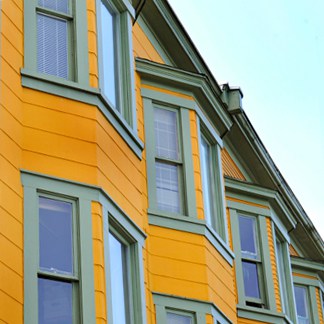- Heritage 101
- Advocacy
- Accessibility for Historic Places
- Climate & Sustainability
- Cultural Maps
- Heritage Place Conservation
- Heritage Policy & Legislation
- Homeowners
- Intangible Cultural Heritage
- Reconciliation
- Indigenous Cultural Heritage
- Setting the Bar: A Reconciliation Guide for Heritage
- 1. Heritage and Reconciliation Pledge
- 2. Acknowledging Land and People
- 3. Celebrating Days of Recognition and Commemoration
- 4. With a Commitment to Learn
- 5. Committing to Strategic Organizational Diversity
- 6. Mission-Making Room for Reconciliation
- 7. Possession, Interpretation, Repatriation and Cultural Care
- 8. Shared Decision Making
- 9. Statements of Significance and other heritage planning documents
- 10. Heritage Conservation Tools, Local Government Act
- Racism: Do Not Let the Forgetting Prevail
- Taking Action: resources for diversity and inclusion
- Webinars On-Demand
Insuring Heritage Properties
The challenges with insuring heritage homes
 A heritage home is an acknowledgment of the value of a building to the community at large, and its preservation helps retain the property for the continued benefit and enjoyment of future generations. Unfortunately, there are many misconceptions around the process of insuring heritage homes (or even just older homes in general) that cause people to shy away from ownership of a heritage home.
A heritage home is an acknowledgment of the value of a building to the community at large, and its preservation helps retain the property for the continued benefit and enjoyment of future generations. Unfortunately, there are many misconceptions around the process of insuring heritage homes (or even just older homes in general) that cause people to shy away from ownership of a heritage home.
“Many people worry about insuring a heritage home. The main concern is that the cost of even a small claim can quickly get out of control,” says Daniel Mirkovic, CEO and President of Square One, a Vancouver-based home insurance specialist. “While this can sometimes be the case, older homes aren’t by definition a bad risk.”
So, why is it more expensive to insure a heritage property than a brand-new home?
Rebuild costs, premiums, and guidelines
“All premiums are decided by the use and condition of a home,” explains Mirkovic. “The reason some heritage properties cost more to insure is usually down to the rebuild costs. In the event of a loss, there are strict rules around what can be replaced, and the standard to which it must be replaced. What many people don’t consider is that it’s actually more expensive to rebuild a heritage home than it is to build a new one. Building techniques and materials evolve over time, incorporating technology and mass production. At the same time, many trades or materials – specific types of plastering, for example- that were perhaps popular 150 years ago when the heritage home was built, are now niche and, as such, they come at a premium.”
Many insurance providers assign one of two categorizations to your home depending on how much of it must be rebuilt to the original standard in the event of a loss. Homes that require only exterior approval must be rebuilt to the original appearance, but the interior can be fitted with modern appliances. “We’ve seen many heritage properties where the entire interior of the home was renovated to the standard of a new home, but the exterior has certain guidelines that the homeowner must follow,” says Mirkovic.
For exterior approval only, there is usually a moderate price increase compared to a modern home. For homes that require exterior and interior approval, for example those that must by law be rebuilt to exactly the same standard inside and out, the cost of rebuilding (and therefore the cost of your insurance premium) will be higher.
“Heritage properties are naturally more susceptible to wear and tear than new buildings, so we advise homeowners to come up with a maintenance plan. Partial losses can sometimes be more complex and expensive than rebuilding,” says Mirkovic. “So, it’s important to make sure the property is valued correctly.”
Household systems
But the cost to rebuild isn’t the only potentially problematic factor.
“As with any home, an insurance provider will consider the household systems that present a risk to you and your property,” says Mirkovic. “For heritage properties, these most often include the integrity of your foundation and the type of wiring used. Copper is the standard today, but many older homes use knob-and-tube wiring. Knob-and-tube can present a fire hazard if not properly maintained, or if it’s been tampered with. You’ll likely find it more difficult to insure a home with knob-and tube wiring, regardless of whether or not it’s designated as a heritage property.”
Insuring a heritage home requires a certain amount of industry expertise. The best providers will consider each home on an individual basis and allow customers to personalize their coverage. “When searching for insurance, make sure that your provider insures your home to ‘replacement cost’. Not all providers do this, meaning that you could be left responsible for paying a significant portion of the rebuild in the event of a loss.”
Changes to the property for coverage
Many insurers require changes to be made to a property before they will even issue coverage. But in order to do the repairs, homeowners need access to the property. For most, this requires getting a mortgage from a bank, who often require a home to be insured before they’ll release the funds. It’s a frustrating circle to find yourself in.
“That’s actually something we hear fairly often,” says Mirkovic. “At Square One, we meet this need by offering customers a grace period. This allows them a chance to complete their purchase, obtain access to the home, and make some renovations while safe in the knowledge that their home is protected in the meantime.”
Owning a heritage property can be a wonderful experience, though there are bound to be certain challenges and costs associated with it. Finding the right insurance provider and knowing the requirements of your home’s specific heritage designation should help to shed some light on the situation. Most importantly, try not to save money on a policy that doesn’t properly protect you, and make sure your insurance provider is aware of your home’s designation.
Square One Insurance Services generously prepared this article for Heritage BC. This is the first in a series of three articles.
About Square One
Square One Insurance Services specializes in a wide variety of home insurance products and services. Eliminating the complexities built into traditional policies, Square One makes it easy and convenient for people to personalize their insurance to meet their needs.

Other useful links
Insurance
- Insuring Heritage Buildings (Ecclesiastical)
- Maintaining Your Heritage Property (Ecclesiastical)
- Getting Insurance for your Heritage Property (Heritage magazine)
- Insuring the Living Past: Heritage-Properties (Insurance Bureau of Canada)
- Insuring your Heritage Home (Insurance Bureau of Canada)
- Confronting the Insurance Industry’s Problem with Heritage Properties (National Trust for Canada)
